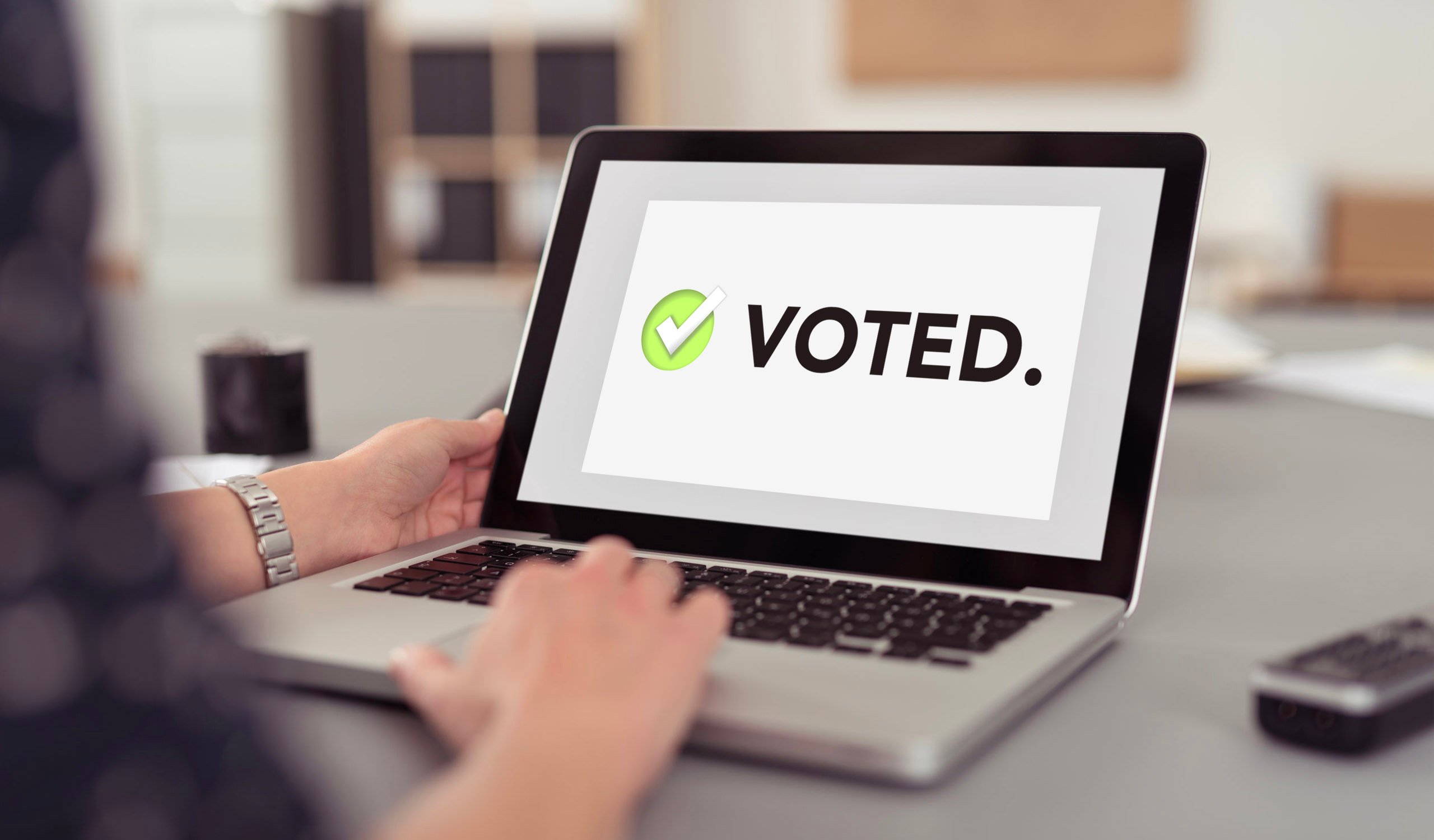Selecting the appropriate voting method for an election is perhaps the most significant decision a member-based organization can make prior to operating these all-important contests.
From voting online, by mail, in person or over the phone, election vendors offer a wide array of services that, in some cases, can be customized to fit an organization’s particular needs. This decision is not only important because it impacts how members will vote, but can have dramatic consequences—positive or negative—for an organization’s budget.
Well before an election gets underway it’s vital to conduct the appropriate research to ascertain what’ll work best for your organization as a whole.
Here’s a breakdown of some of the most common voting methods on the market and what makes them so appealing:
Online Voting
Voting in political elections may never be as easy as grabbing a smartphone and casting a ballot, but voting online has rapidly become the preferred method among member-based organizations across the United States.
People are becoming increasingly more comfortable managing their lives online. And that also includes such services as mobile and online banking, which has become more ubiquitous in recent years despite realistic concerns about security and data privacy. At the same time, people are spending a lot more time interacting with digital devices. According to a 2017 study by Nielsen, U.S. adults spent three hours and 48 minutes per day on smartphones, computers and tablets.
So why not take elections to where your members are dedicating so much of their personal time?
Convenience
One reason casting ballots over the web has become so popular is convenience. Depending on the election management company, members may be able to vote on most digital devices and across various web browsers. When an election rolls around, they can easily take a break from shopping on Amazon and streaming Netflix and cast a ballot and carry on with their day.
Depending on the vendor, the act of actually casting the ballot may be as simple as signing in to a member portal and voting. In other cases, voters may have to log in to a specific election site.
Savings
Let’s be honest: Most people assessing a large financial commitment often inquire about savings opportunities. In some respects, it’s almost impossible not to experience a reduction in election costs when running an online race. Here’s why: With online voting, there is no need to spend exorbitant amounts of money on printing and mass mailings. Additionally, all the things that were once physically crafted—paper ballots and other relevant materials—are digitized and delivered to a member’s email inbox instantly. Depending on the size of the organization, the budgetary benefits can be significant.
Going Social
According to the nonprofit Pew Research Center, nearly seven in 10 Americans are on social media—up from 5 percent in 2005. For organizations looking to adopt a new approach to voter outreach, it’s apparent that social media engagement is crucial. With that in mind, it’s not uncommon for election management companies to offer social media integration with online voting.
How does it work? Well, once a voter completes the ballot, various social media “buttons” may appear, enabling them to announce their participation. Such a simple act can have a profound effect on someone, by affirming their commitment to their organization and encouraging others to do so, as well.
Voting By Mail
Long favored by organizations because of its familiarity and perceived security, mail-in ballots have yet to be fully supplanted by online voting. Under this option, members have ballots designed, printed, and mailed to members, who subsequently cast their vote and return them for scanning.
Customizable
In certain circumstances, ballots can be customized and designed to align with your organization’s brand. The mailing can include other material, since elections provide a unique opportunity for organizations to broadcast announcements, updates regarding regulations or bylaws, or to genuinely express gratitude for the recipient’s efforts year-round.
Reliable
Paper ballots are consistently selected as one of the top forms of voting due to their reliability. For years—or even decades—organizations have utilized this method to manage elections, because they’re easily customizable, and are a perfect way to engage with members. On top of that, paper ballots are easily verifiable, meaning both organizations and members are at peace knowing votes are secure.
On-Site Voting
Sometimes you just can’t beat voting in person. Organizations interested in coordinating on-site elections have important decisions to make, including how ballots will be cast and where voting will take place.
One of the most popular times of the year to hold contests are annual meetings and conventions, which almost guarantee strong turnout. Election organizers can decide from either paper ballots or some form of e-voting, or both. The latter can include voting by touchscreen.
Hosting an election during a large-scale convention or yearly meeting allows members to have their voices heard as well as attend educational seminars and participate in events that increase camaraderie.
Hybrid Voting
Two voting methods can be combined to provide flexibility for members with a voting preference. As we discussed earlier, internet usage is on the rise and will only trend ever-upward. Yet, some people are comfortable voting the “old-fashioned way.” In that spirit, election vendors may offer hybrid voting—which basically means multiple forms of voting during an election. Those comfortable with casting a ballot online can do so at their convenience, while others who prefer more traditional methods can simply wait for theirs to come in the mail.
An Additional Voting Option: Telephone
While voting over the phone is a common method for contest television shows like American Idol and America’s Got Talent, member-based groups can also partake in this practice. It may be hard to gather all members in one room to vote, and some may rather click a few buttons on a phone to cast their ballot.
An organization can provide individuals with instructions, or mail details to each voter to ensure everyone knows how to participate. A phone number associated with the specific election will accompany the instructions and, as long as voters have a touch-tone phone, they can call in at the time of the election and follow the voice prompts.
The Verdict
Well, there really isn’t one. And that’s the point. Since elections are about choices, it’s important for each and every group to determine what works best for them, and proceed accordingly. While these are some of the most common methods on the market, there may be election management companies that offer alternative forms of voting, including by telephone, for instance. For those looking to cut costs, online voting may be the way to go, but make sure to speak with all the parties involved before making such an important decision.
For more than a decade, YesElections has managed elections throughout the United States. Our investment in state-of-the-art security makes us one of the most reliable election management agencies in the nation. To learn more about how YesElections can help your organization, request a free consultation, today.







